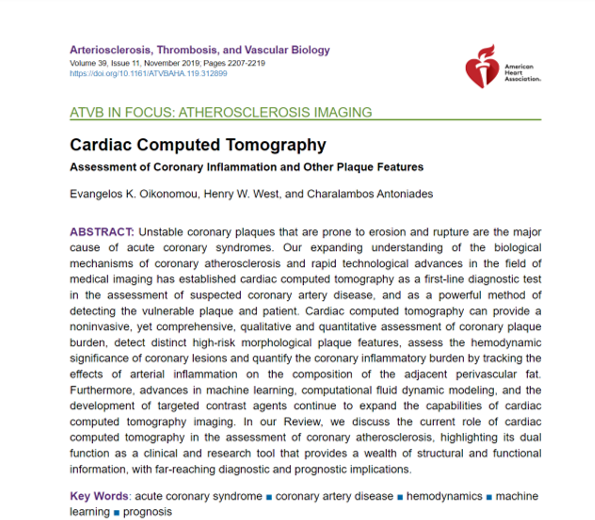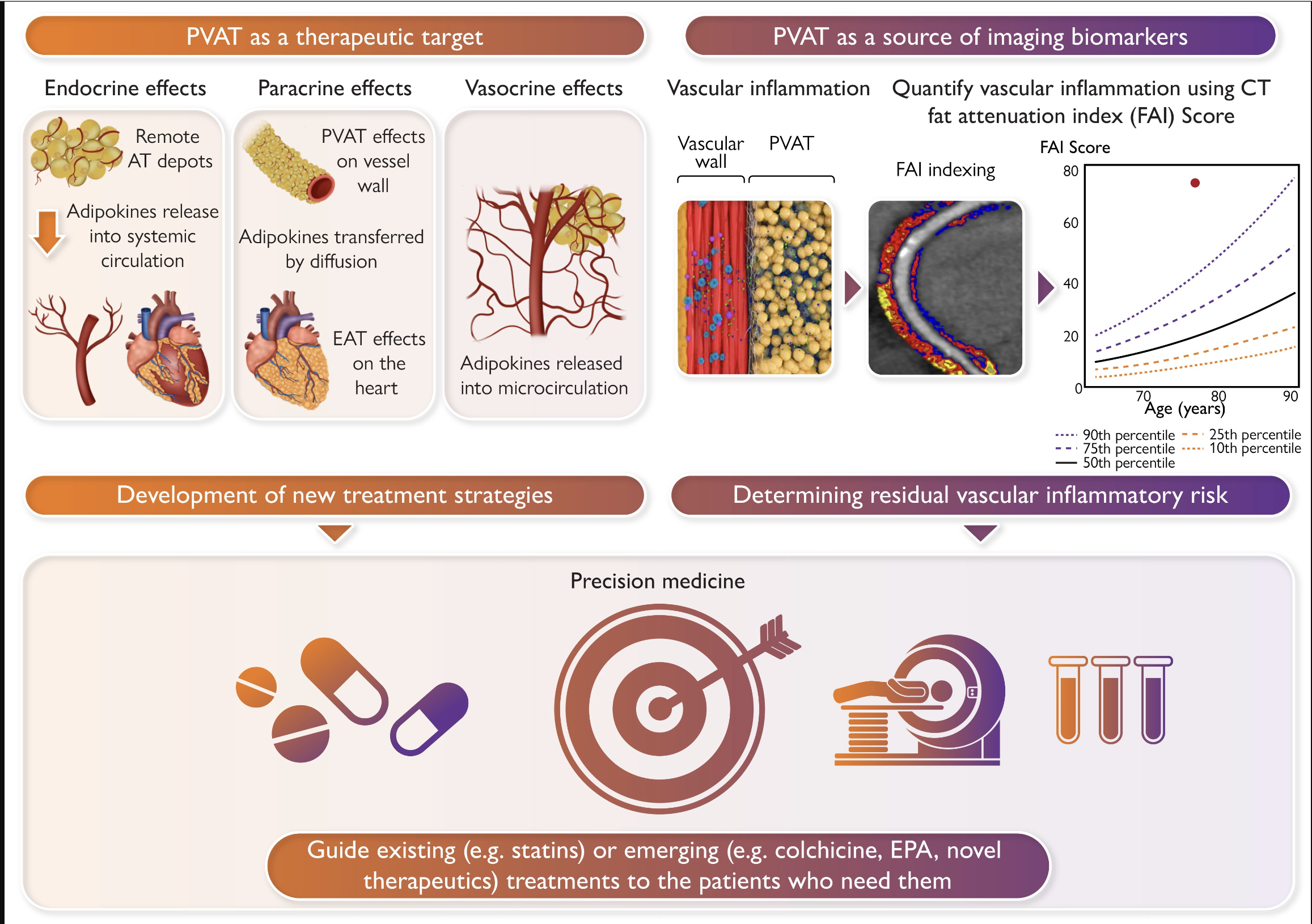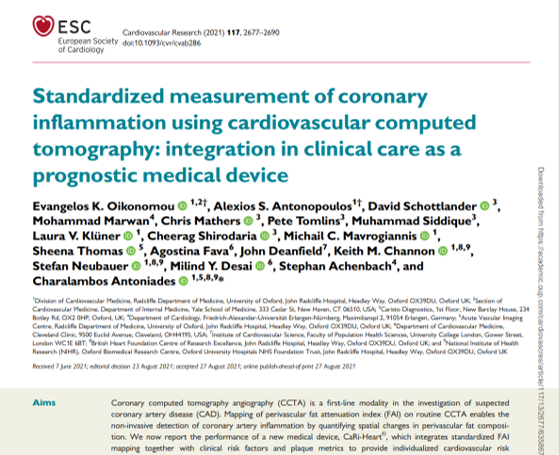Cardiac Computed Tomography Assessment of Coronary Inflammation and other Plaque Features

Unstable coronary plaques that are prone to erosion and rupture are the major cause of acute coronary syndromes. Our expanding understanding of the biological mechanisms of coronary atherosclerosis and rapid technological advances in the field of medical imaging has established cardiac computed tomography as a first-line diagnostic test in the assessment of suspected coronary artery disease, and as a powerful method of detecting the vulnerable plaque and patient.
Cardiac computed tomography can provide a noninvasive, yet comprehensive, qualitative and quantitative assessment of coronary plaque burden, detect distinct high-risk morphological plaque features, assess the hemodynamic significance of coronary lesions and quantify the coronary inflammatory burden by tracking the effects of arterial inflammation on the composition of the adjacent perivascular fat. Furthermore, advances in machine learning, computational fluid dynamic modeling, and the development of targeted contrast agents continue to expand the capabilities of cardiac computed tomography imaging.
In our Review, we discuss the current role of cardiac computed tomography in the assessment of coronary atherosclerosis, highlighting its dual function as a clinical and research tool that provides a wealth of structural and functional information, with far-reaching diagnostic and prognostic implications.


